#black conservatism
Explore tagged Tumblr posts
Text
Another Black Conservative Finds Out
youtube
#reese waters#carl baxter#slave#racism#black conservatism#conservatism#politics#racist of the week#youtube
0 notes
Text
#george carlin#politics#conservatives#maga cult#vote blue#vote kamala#2024 presidential election#democrats#kamala harris#donald trump#republicans#conservatism#conservative#kamala 2024#reproductive rights#reproductive freedom#reproductive health#reproductive justice#abortion rights#women's rights#black lives matter#blacklivesmatter
59 notes
·
View notes
Text
No such thing as a white ally.
White yanks will turn on you in a SECOND. Avoid white yanks. They'll get you killed.

They will lie to your face.
#election 2024#conservatism#america#donald trump#trump 2024#trump#black women#feminism#united states
27 notes
·
View notes
Text
I have begun to think about this a lot...nowadays there are some black people who have never done a hard day's work in their life, who may have been born very very upper middle class or even upper class, and are completely disconnected from the struggles of the working class! A part of me is happy about this, fifty years ago this would have been UNIMAGINABLE, at the same time, a part of me thinks "same shit different toilet" (also, i do know racial discrimination of the black community still happens, but bear with me). And a more ambitious part of me wants something similar to happen to the lgbt community, to succeed in a lot of our goals, perhaps so many that twenty or thirty years from now we could see transmasc CEOs who have never experienced transphobia and who say shitty things about immigrants on public news and whatnot, or perhaps a very popular texan nonbinary news anchor who talks shit about the fucking hippies and commies who need to take a bath and get a motherfucking haircut instead of going around carjacking with illegal immigrants >:3!!! Or a transfem lesbian who has her own podcast talking about how much she hates degeneracy in modern society and that the values of traditional gender roles and racial hierarchy have been lost by leftards >:3!! Just some funny scenarios i guess, never hurts to dream! Message me if you want to like, roleplay one of these, or talk about anything else to be honest.
#transgender#nonbinary#autism#lgbt pride#gay#lesbian#transfem#transmasc#socialism#anti capitalism#lgbtq community#blacklivesmatter#black community#opression#fucking communists#hippies#:3#>:3#immigrants#funny#future#if only#my ocs#donald trump#us politics#marxism#traditionalism#conservatism#fuck conservatives#fuck republicans
23 notes
·
View notes
Text

#mlk memorial#black lives matter#african american history#malcolm x#civil rights movement#civil rights#mlkquotes#mlk#mlk jr#conservative#lgbtq community#democrat#republican#liberal#conservatism#us government#free speech#human rights#politicians#censorship#democracy#discrimination
264 notes
·
View notes
Text

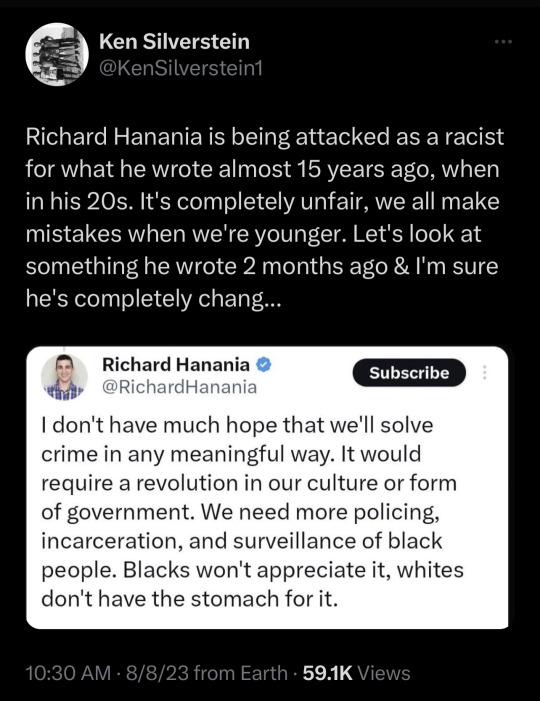
I was stunned to find the number of people in the tech industry who are all-in on the theory of scientific racism and eugenics. They've been out about that for years, though.
There's a sort of complex where this was the birth of, whether you want to call it the intellectual dark web, I think that was the moment there. They've sort of been radicalized gradually, as happens with these things, where they started with, like, Slate Star Codex was a really big key central point for them to gather and sort of say, well, we have to interrogate and question a lot of these (egalitarian) assumptions. They were very actively courted by the neo-reactionary movement.
So you have things like Peter Teal holding dinner parties with the founders of the movement, and sort of people who have explicitly endorsed slavery, explicitly endorsed disenfranchising women, and people of any non-male gender from being able to vote.
And I always resent it because I sound like a crazy person by just merely accurately describing what they have publicly said. I sound like a conspiracy theorist who's pinning up red strings on a cork board by literally being like, “This is a thing they said out loud, in public, multiple times.” And people are like, “There's no way.” And I'm like, I don't know what to tell you, but it's all out there. We have receipts for ten years.
They are way out there, and they have an explicit agenda of normalizing, really radical, really hateful agendas.
And for me, it's like, it's just a very simple thing.
It's like I have to care about my kid’s safety. I have to care about my friend's safety, I have to care about, you know, basic moral values that we used to agree on.
And that's the other thing too, is because I knew these people 10 and 20 years ago. Like the first blog that Marc Andreessen ever had, I set up. It was on a platform I helped build. So I know that there was a point in which, at least from the public visible face, this was once a reasonable person. And for them to embrace the sheer intellectual dishonesty, along with the hatred… the fact that they're just like, they don't care that they're lying because it's an effective tool to get what they want.
That stuff is… I don't know.
It really soured me on the traditional tech industry.
This is what their tech is for. The things they fund are meant to carry out their agenda.
Let me give you a clear example: To the people who believe in this extremist racist ideology, Elon Musk being willing to lose tens of billions of dollars in value of his own money, presumably, in Twitter, turning into “X,” is a principled person who puts his values ahead of the dollar. He is so committed to advancing this reactionary movement that he's willing to forego tens of billions of dollars of personal wealth in order to advance it.
And what rational people see as the destruction of Twitter is rather, the destruction of the ability for anybody to ever again make a Black Lives Matter hashtag, or to make a Me Too hashtag. And that is because he's not a dumb person. Like the thing that a lot of progressives and reasonable people want to just say, well, he's racist and evil, so he must be dumb.
He's not a dumb person.
Peter Thiel's not a dumb person.
So if we assume they're smart people who understand how systems work and have virtually unlimited resources, then why would they choose to do this?
Well, there must be a reason.
And there is a reason.
It's just one we don't like to confront.
Even more insidious is the fact that these tech moguls own huge companies with enormous influence, and wielding that kind of power over their employees creates a herd mentality within their workforces.
So if, for example, Facebook's board includes both Peter Thiel and Mark Andreessen. They don't have to give somebody an order to say what kind of content they want to promote on the newsfeed, on Facebook.
Everybody who works there knows this is who our bosses are. This is what we got to do, because they're smart. Everybody's smart, everybody's very reasonable.
And so you don't have to imagine, like I said, I don't have to be a conspiracy theorist that's putting up some red strings on a cork board to connect the dots and whatever. You're like, “Oh, I'm a midlevel product manager at a company. I'd like to make a name for myself and make the share price go up. And I know the boss's boss has been on every podcast in the world saying we need to promote more voices that are calling for ethnic cleansing,” okay?
Message received.
That's what a person who has no moral context would do. And there are a cohort of people in the technology industry that have come up entirely consuming media owned and created by these people, because they know the programming site Hacker News, which is owned by a venture capital firm and run by Paul Graham, is one of these guys.
They read blogs written explicitly by these guys. They consume it. They were on clubhouse. They're in a Discord chat with others that are sort of buying the stuff. They have a full wraparound media bubble. If they just read substacks and listen to the blog posts or read the blog posts from these folks, you can have what feels like an entire media diet shaped solely by this dialogue.
And this is why they're trying to own the media outlets and the distribution, like Twitter, alongside owning the platforms. And the fact that they can control more parts of society, right? The leverage of owning the distribution networks, the leverage of owning media outlets, the leverage of owning the platforms is very, very different, because we do have a lot of historical precedent.
If we go back 100 years ago and we say you're reeling from coming out of a pandemic, you are reeling from economic precarity and inequality at unprecedented levels, and you see the rise of, again, a direct parallel, virulent antisemitism. And you have things like the oil barons giving way to the Henry Fords of the world, the labor crackdown of the Pinkertons, Ford's embrace of, you know, to the point where he's pen pals with Hitler, and IBM building the technology.
The first person that ever asked me to do technology work for him was a neighbor of ours, and he had a tattoo on his wrist. And I was a little kid and didn't know what it meant. And I asked him what it was. It was his concentration camp tatoo. And what people don't realize is those are database entries in an IBM database.
And IBM's stance at the time was that they were neutral.
This is what technology does to enable the rise of fascism and victimization around the world. And we have a direct precedent less than 100 years ago, of how these technologies are used.
And I don't say that lightly.
I'm not saying we're there yet, but that is how you get there. And I would be surprised if the pattern doesn't play out in some ways, in terms of if you have tycoons of industry at a moment when the world is reckoning with massive social change, cultural change, along with recovering from things like economic destruction, inequality and pandemics… And you have rising military threats around the world.
That is exactly where we were a century ago.
—ANIL DASH shares his thoughts and experiences on Richard Hanania and rampant neo-fascism in Silicon Valley
#anil dash#richard hanania#peter thiel#elon musk#silicon valley#eugenics#fascism#twitter#white supremacy#antisemitism#racism#anti blackness#misogyny#transphobia#homophobia#conservatism#libertarianism#libertarians
154 notes
·
View notes
Text
So... premeditated murder?

#kyle rittenhouse#conservatives#conservatism#blm#black lives matter#world events#progressive#leftism#liberalism#libertarian#pro 2a#anyways keep conservatives away from kids
5 notes
·
View notes
Text
i think living in the usa automatically means you owe Black issues your attention
#and it will still benefit you#not that it should matter#but it will#something i noticed about the xenophobia against Latinos#after the election and people seeing the exit polls#even if you can point to any Black person who said that#it was still Black people being the loudest against that#for every white latino i saw on twitter saying “call ICE on your republican latino friends”#even on twitter just through text#I saw 10 Black people on video on TikTok#defending Latinos + undocumented immigrants harder than even Latinos ourselves#Dismantling conservatism and white supremacy in the Latino community is still important and our job#but Black leftists are unwavering and the most steadfast allies#compassion and empathy where it's not even entirely deserved#or maybe that's me being self hating#Even if it wasnt true#nonblack US activists owe so much to Black people#post inspired mostly by seeing how quick Black activists I follow were to identify and call out xenophobia against Latinos#and the Onion “Still too Early to Figure Out Which Minority To Blame”#maybe i got off topic#is this a selfish post
3 notes
·
View notes
Text
youtube
0 notes
Text
Tina Nguyen explains The Convention of States
An enlightening & frankly scary conversation with Puck journalist Tina Nguyen about the lengths conservative activists are willing to go.
More of our conversation on @spotify
#larry wilmore#black on the air#the ringer#spotify#podcast#tina nguyen#conservatism#convention of states
12 notes
·
View notes
Text
Yes to all of this.
Though I do agree with her that the new SaTC show is trash 😂
#conservatism#left wing#right wing#i want to live in a world that is a conservative's worst nightmare#instead of this world where people get KILLED for being gay#or trans#or black#being forced to watch shows sure does sound horrible in comparison you bitch
23 notes
·
View notes
Text
anarchy is achievable and we can have peace, but there is so much work to do
the research has already been done, giving public services freely, opening access to all education levels, and decriminalizing substances works when you team with healthcare systems, defund the police, and reinvest those resources to keep people from having to do crime. but you cant have all that and billionaires, we cant have peace when law enforcement is still EVEN RUMORED to be racially (or any type of) discriminatory, its so much harder to live together when people still use mental illnesses as the basis for their horror movies
we are all suffering from generational trauma, its up to us to fight the overwhelming force of the cycle of pain. everythings not great right now, but you CANNOT let that be an excuse to be terrible to those around you. we're all hurting. it's not going to work the first couple generations but as more and more people grow and learn to fight the cycle of bigotry, hatred, abuse, and overall malice, we will see the dawn of a day when governments are not necessary.
governments are inherently corrupt and are a cesspool of lies, treachery, and like every single one has problems with money. but that does not negate the fact that we need them now. does the government do a good job of protecting marginalized people? no, never really has, but are there at least some protections in place? yes, and that's where it has to start. i really wish people opened their eyes and saw that there is no reason to mock a person with a limb difference, to call someone a slur, to deface stores and houses belonging to people different from them, to do even the worst and most reprehensible thing a person can do to another, steal the rest of their life from them.
hatred is pointless, always has been, always will be, it is inarguable. stop wasting energy being afraid of people who are different from you, you could be laughing with your friends or admiring the sky or idk maybe asking marginalized people about their experiences to prOTECT YOURSELF FROM FALLING INTO THE HATE CYCLE
anarchy is achievable, choose kindness even when its hard
#anarchist#anarchism#philosophy#kindness#thoughts#words#politics#conservatism#democracy#my black friend is lowkey missing and idk how to help#last time i heard he was at the cops station paying a fine#stopthehate
14 notes
·
View notes
Text
“No idea's original, there's nothing new under the sun / It's never what you do, but how it's done!” -Nas
Be sure to follow us on all platforms!
Add Civic Cipher to your podcast favorites!
#civic cipher#fox news#liberal policies#liberals#conservative#conservatism#conservatives#defund the police#police brutality#black lives matter#blm#blue lives matter#thin blue line#bluelivesmatter#republicanism#republican#republicans#democrat#democrats#trump#donald trump#trump 2024#biden harris#joe biden#ron desantis#desantis 2024#blacktwitter#blackexcellence#black twitter#black people twitter
17 notes
·
View notes
Text

#slavery#colonialism#imperialism#ideology#hypocrisy#conservatism#money slave#black lives have always mattered#black lives are beloved#black lives are precious#black lives fucking matter#black lives movement#black lives are human lives#black lives count#black lives murder
168 notes
·
View notes
Text

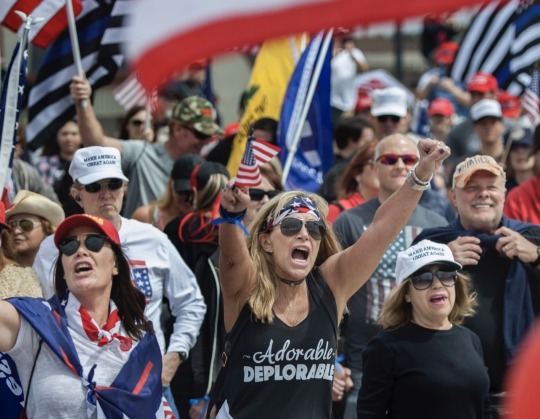
Since the founding of the United States, politicians and pundits have warned that partisanship is a danger to democracy. George Washington, in his Farewell Address, worried that political parties, or factions, could "allow cunning, ambitious and unprincipled men" to rise to power and subvert democracy. More recently, many political observers are concerned that increasing political polarization on left and right makes compromise impossible, and leads to the destruction of democratic norms and institutions.
A new study, however, suggests that the main threat to our democracy may not be the hardening of political ideology, but rather the hardening of one particular political ideology. Political scientists Steven V. Miller of Clemson and Nicholas T. Davis of Texas A&M have released a working paper titled "White Outgroup Intolerance and Declining Support for American Democracy." Their study finds a correlation between white American's intolerance, and support for authoritarian rule. In other words, when intolerant white people fear democracy may benefit marginalized people, they abandon their commitment to democracy.
The World Values Survey data used is from the period 1995 to 2011 — well before Donald Trump's 2016 run for president. It suggests, though, that Trump's bigotry and his authoritarianism are not separate problems, but are intertwined. When Trump calls Mexicans "rapists," and when he praises authoritarian leaders, he is appealing to the same voters.
Miller and Davis' paper quotes alt right, neo-fascist leader Richard Spencer, who in a 2013 speech declared: "We need an ethno-state so that our people can ‘come home again’… We must give up the false dreams of equality and democracy."

Ethnic cleansing is impossible as long as marginalized people have enough votes to stop it. But this roadblock disappears if you get rid of democracy. Spencer understands that white rule in the current era essentially requires totalitarianism. That's the logic of fascism.
(continue reading)
#politics#republicans#donald trump#white supremacy#fascism#trumpism#authoritarianism#conservatism#deplorables#racism#anti blackness#trump effect#the trump effect
206 notes
·
View notes
Text
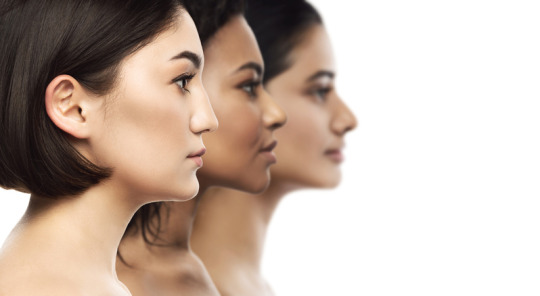
When and why yellow was first applied to people of East Asian descent is rather murky.
The process occurred over hundreds of years. As some scholars have noted, it's not as if there were people with yellow skin. The whole "yellow equals Asian" thing had to be invented. And in fact, there was a time when there was no such thing as "Asian" — even that had to be invented.
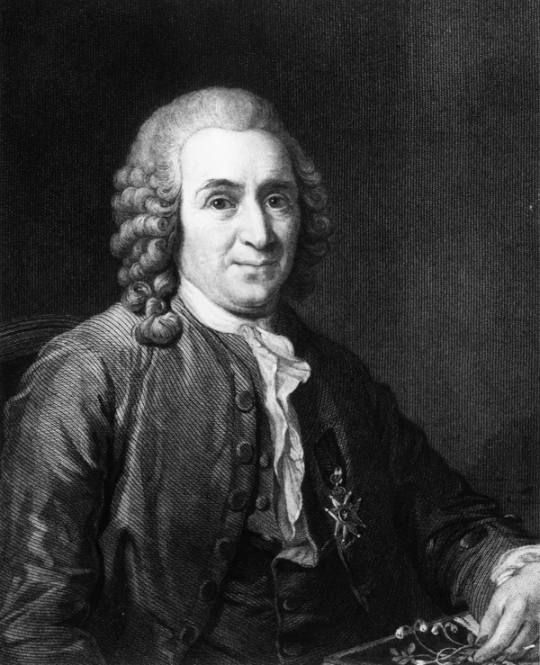
Enter Carl Linnaeus, an influential Swedish physician and botanist now known as the "father of modern taxonomy." In 1735, Linnaeus separated humans into four groups, including Homo Asiaticus — Asian Man. The other three categories, European, African and American, already had established — albeit arbitrary — colors: white, black and red. Linnaeus, searching for a distinguishing color for his Asian Man, eventually declared Asians the color "luridus," meaning "lurid," "sallow," or "pale yellow."
I get this bit of history from Michael Keevak, a professor at National Taiwan University, who writes in his book Becoming Yellow: A Short History of Racial Thinkingthat "Luridus also appeared in several of Linnaeus's botanical publications to characterize unhealthy and toxic plants."
Keevak argues that these early European anthropologists used "yellow" to refer to Asian people because "Asia was seductive, mysterious, full of pleasures and spices and perfumes and fantastic wealth." Yellow had multiple connotations, which included both "serene" and "happy," as well as "toxic" and "impure."
He tells me that there was "something dangerous, exotic and threatening about Asia that 'yellow' ... helped reinforce."
Which might explain why the fear that East Asian countries would take over the West became known as yellow peril.
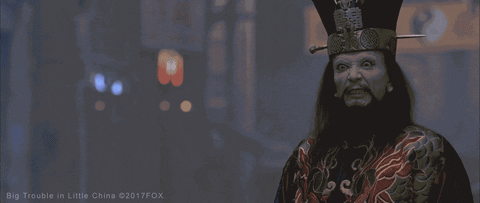
In 1956, Marvel's short-lived Yellow Claw comic featured a villain of the title's name. He was drawn with a bald head, long scraggly beard, slanted eyes and, yes, fingers that resembled claws. True to the name, his skin had a distinct yellow hue.
That was all make-believe. The real-life consequence of vilifying a race included things like the Chinese Exclusion Act of 1882, which banned Chinese immigration to the United States until 1943; the violence against hundreds of Filipino farmworkers in Exeter and Watsonville, Calif., who were mobbed and driven out of their homes by white Americans in 1929 and 1930; and the incarceration of more than 100,000 Japanese Americans during World War II.
For as long as Asians have lived in the United States, white people have been trying to label us: who we are, what we look like and how we should be described. It was also white people who defined our terminology — for many decades, "Orientals" was the moniker of choice. (And when people hurled slurs at us, we've been called Chinamen, Japs, gooks, Asiatics, Mongols and Chinks.)
That started to shift in the 1960s.
That's when the term "Asian American" was born. At the time, it was linked to political advocacy. Yuji Ichioka, then a graduate student and activist at the University of California, Berkeley, who would later become a leading historian and scholar, is widely credited with coining the term.
This period, often referred to as the Yellow Power Movement, was one of the first times these disparate people — Korean Americans, Vietnamese Americans, Japanese Americans, Indian Americans, Laotian Americans, Cambodian Americans, to name only some — grouped themselves under one pan-ethnic identity.

There was power in numbers, which Ichioka knew as founder of the Asian American Political Alliance. In a letter and questionnaire to new members, AAPA made clear that its organization was not just advocating for the creation of Asian American studies courses, but for broader social causes. That included adopting socialist policies and supporting the Black Liberation Movement, the Women's Liberation Movement, and anti-Vietnam and anti-imperialist efforts.
Spurred in part by the activism of the times, the term "Asian American" rose to popularity. It also helped that the Immigration and Nationality Act of 1965 was passed, allowing an influx of Asian immigrants to the U.S.
But over the years, the term Asian American revealed itself to be a complicated solution to the problem of identity.
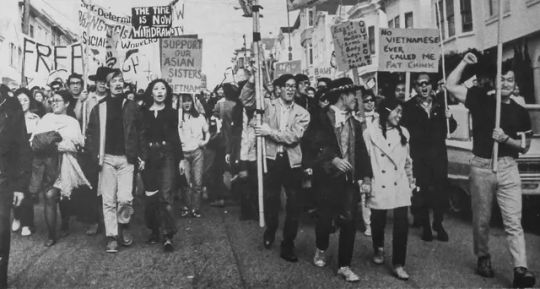
For one thing, most people who technically fit into the "Asian American" category refer to themselves based on their ethnic group or country of origin, according to the National Asian American Survey (NAAS).
Karthick Ramakrishnan, a professor at the University of California, Riverside, and the leader of NAAS, says he and his colleagues found that most Americans think of "Asian Americans" as East Asians.
Karen Ishizuka, who wrote Serve the People: Making Asian America in the Long Sixties, says that "Asian American" is still an important identifier because of the political power it has carried for decades. But it's crucial for people to be educated about what it once meant, she says, because the term has become "more like an adjective now, rather than a political identity."
Ramakrishnan and Ishizuka seem to reinforce why I've been searching for a term like yellow. In all my conversations about this issue, I've found myself remarking how the question of "What about yellow?" feels so hair-pullingly existential. Maybe it's because Asian American seems like it has been watered down from activism to adjective. I find myself wanting a label that cuts a little deeper.
In 1969, a Japanese American activist named Larry Kubota wrote a manifesto called "Yellow Power!" that was published in Gidra, a radical magazinecreated by Asian American activists at the University of California, Los Angeles.
His words were a rallying cry. "Yellow power is a call for all Asian Americans to end the silence that has condemned us to suffer in this racist society and to unite with our black, brown and red brothers of the Third World for survival, self-determination and the creation of a more humanistic society," he wrote.
Kubota wasn't the only one using yellow in a new and different way.
Ishizuka tells me about a bunch of different groups in the 1960s and 1970s: Yellow Seeds was a radical organization in Philadelphia that published a bilingual English-Chinese newspaper of the same name. The Yellow Identity Symposium was a conference at Berkeley that helped ignite the Third World Liberation strikes. The Yellow Brotherhood was an Asian group made up mostly of former gang members in Los Angeles that tried to disband gangs and curb drug addiction. Yellow Pearl, a play on "yellow peril," was a music project started by an activist group in New York's Chinatown.
I call up Russell Leong. He is a professor emeritus at UCLA and was the longtime editor of the radical Amerasia journal. As a kid, he used to make Yellow Power posters in San Francisco's Chinatown.
"Do you call yourself yellow?" I ask him.
"That's an interesting question," Leong says. "If I'm with a group of yellow people like my close friends, I'll call myself a Chink, a Chinaman, a yellow. But in public, I'm not gonna call anyone else that .... it depends what I'm comfortable with. It's the same with my English or Chinese name. Sometimes I'll use my American name. Sometimes I'll use my Chinese name."
Whatever the word, he adds, "I think it's better that we have more words to describe ourselves."
I get it. Despite the incompleteness of any one term, together they can become a powerful tool.
Still, if there were no term like "Asian American" — if it didn't exist, if we gave up on it entirely — then what could we have to anchor ourselves? After all, it's not just about a word; it's about an entire identity.
Ellen Wu, the historian from Indiana, digs into that point: "To circle back to this question of, do we use something like yellow or brown? ... Why do we even feel like we have to?"
Wu acknowledges that we're always craving words that might come closer to encapsulating who we are.
"I think that invisibility — that feeling that we don't matter, that worse, we're statistically insignificant — in some ways really fuels that desire to have a really concise and meaningful way of talking about ourselves," she says.
I pose all of this to Jenn Fang, an activist and writer who runs the appropriately-named blog Reappropriate.
She's not so convinced that yellow would resolve the issues that plague Asian American. It might be a useful identifier if yellow was used very intentionally and people knew its history, she says. But it could also fall into the same traps as Asian American. With ubiquity, it could eventually lose its power.
Fang also thinks that if people were to identify as yellow, there would be more people staying in their own lanes, so to speak — that, say, East Asians who call themselves yellow might not advocate on behalf of Asians who call themselves brown.
"Are you reclaiming the slur, or reclaiming our history?" Fang asks me. "The thing I'm concerned about is — is [yellow] a truly reflective way of talking about the East Asian American experience? Is yellow more nuancing? ... Or more flattening?"
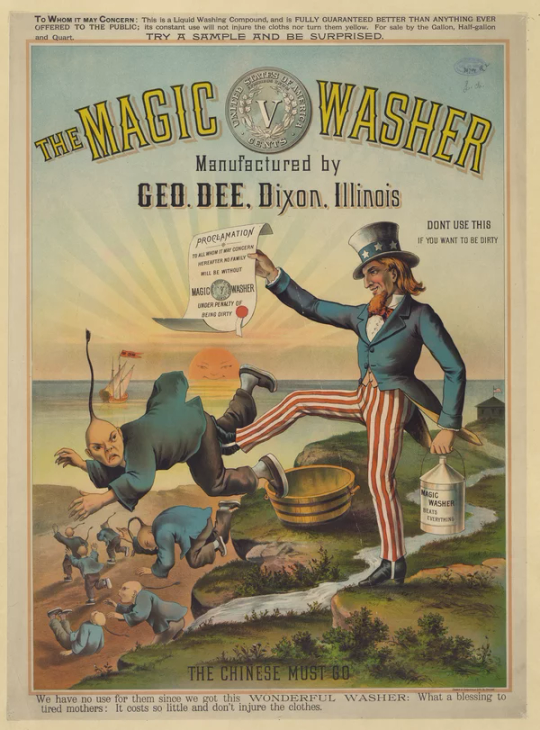
In the pinnacle of the civil rights era, activists used yellow as a term of empowerment — a term they chose for themselves. In some ways, I'm still seeing that today.
When the director of Crazy Rich Asians, Jon Chu, wanted to include a Mandarin version of Coldplay's song "Yellow" in a pivotal scene of his movie, some people were concerned that including it might not fly in such a high-profile movie about Asians. But that was exactly Chu's point. He wrote a letter to the band pleading his case — he wanted to attach something gorgeous to the word.
"If we're going to be called yellow," Chu wrote, "we're going to make it beautiful."
I can't help but think back to a group of people I spoke to late last year.
The Yellow Jackets Collective is an activist group, the name an echo of the 1960s. They're four people in New York City who identify themselves with a wide swath of terms, in addition to yellow: she/her, womxn, brown, Asian American, femme, child of Chinese immigrants, Korean American, 1st gen., first gen. diasporic and "collaborating towards futures that center marginalized bodies."
I send them an e-mail. "Why yellow?"
They point out that they don't just walk around the world calling every East Asian person they meet "yellow."
"Identity ideally is about you and how you feel and what you believe has shaped you," Michelle Ling responds.
I let Ling's words percolate. I don't know if I'll walk around in the world calling myself yellow — maybe to people who have similar experiences to mine; certainly not around people who've flung slurs at me.

Even so, having different words to choose from is itself a comfort. Having yellow in my arsenal makes me feel like my identity doesn't hinge on just one thing — one phrase, one history or one experience.
After a back-and-forth with the group, something they've written stops me in my metaphorical tracks. It's from the Yellow Jackets mantra; a snapback comment that I can't help but appreciate:
"We say Yellow again because at our most powerful we are a YELLOW PERIL and those who oppress us should be afraid. We are watching you. We are making moves."
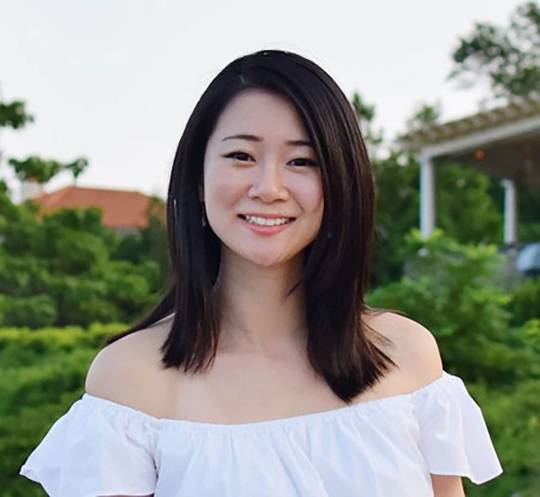
In “The Travels of Marco Polo,” the people of China are described as “white.” Records left by eighteenth century missionaries also report the skin color of Japanese and other East Asian people as clearly white. Yet in the nineteenth century, this perception quietly gave way to descriptions as “yellow.” In travel books, scientific discourse, and works of art, portrayals of East Asians began presenting them as having yellow skin. What happened in between?

In his 2011 book “Becoming Yellow: A Short History of Racial Thinking,” National Taiwan University professor Michael Keevak delves deeply into the origins and history of how and why East Asians went from being seen as “white” to being classified as “yellow.”
The first suspect implicated in applying the “yellow” label to East Asian faces is the famed Carl Linnaeus (1707-78). At first, Linnaeus used the Latin adjective “fuscus,” meaning “dark,” to describe the skin color of Asians. But in the tenth edition of his 1758-9 “Systema Naturae,” he specified it with the term “luridus,” meaning “light yellow” or “pale.”

It was Johann Friedrich Blumenbach (1752-1840) who went beyond the coloring ascribed by Linnaeus to apply the completely different label of “Mongolianness.” Regarded as a founder of comparative anatomy, the German zoologist did more than just use the Latin word “gilvus,” meaning “light yellow,” to describe East Asian skin color: he also implicated the Mongols, a name with troubling and threatening connotations for Europeans with their memories of Attila the Hun, Genghis Khan, and Timur.
While the references remained anomalous at first, travelers to East Asia gradually began describing locals there more and more as “yellow.” By the nineteenth century, Keevak argued, the “yellow race” become a key part of anthropology.
But the yellow label came associated with discrimination, exclusion, and violence. Just as no one in the world is purely white or black, neither does anyone actually have skin that is deep yellow. By “creating” a skin color and investing traits such as “Mongolian eyes,” the Mongolian birthmark, and mongolism (the old name for Down syndrome), Westerners made the perceived yellow race synonymous with abnormality. They also responded to the arrival of immigrants from Asia by sounding the alarm over the “yellow peril” - a term with a whole range of negative associations from overpopulation to heathenism, economic competition, and political and social regression. The hidden agenda of this racial color-coding becomes apparent when one considers who benefits from a hierarchy that places “yellow” and “black” beneath “white.”
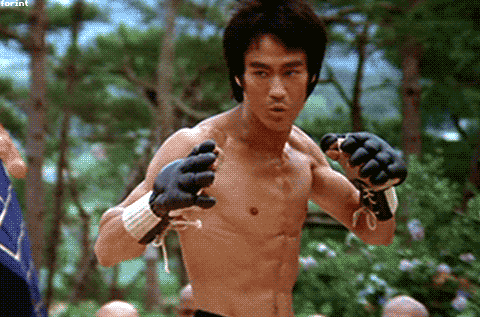
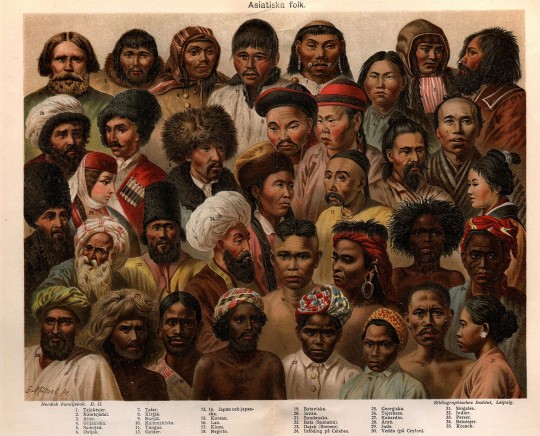
#kemetic dreams#asian#Blumenbach#german#european#exonym#banning exonyms#yellow#white#yellow people#black#black people#racist#conservatism#political#american politics#liberalism#civil rights#racist words#bruce lee#brownskin#brown skin#asian American#asian american literature#asian american history#asian heritage month#asian american author#asian american pacific islander heritage month#stop asian hate#aapi
5 notes
·
View notes